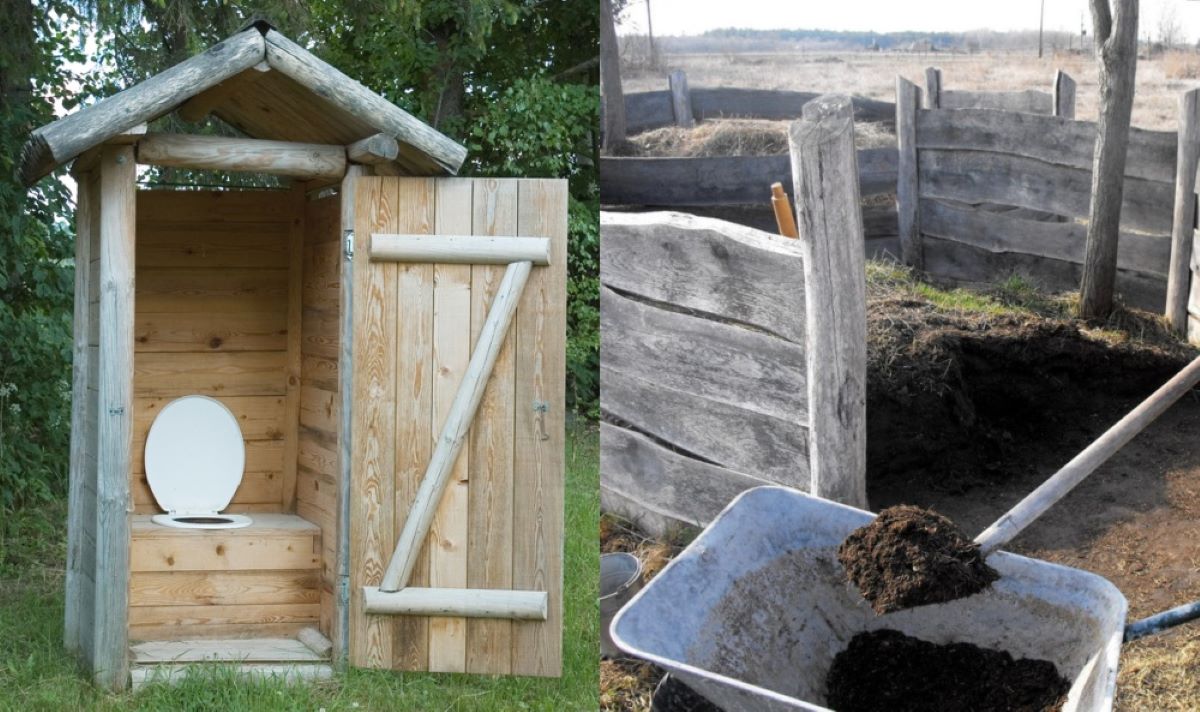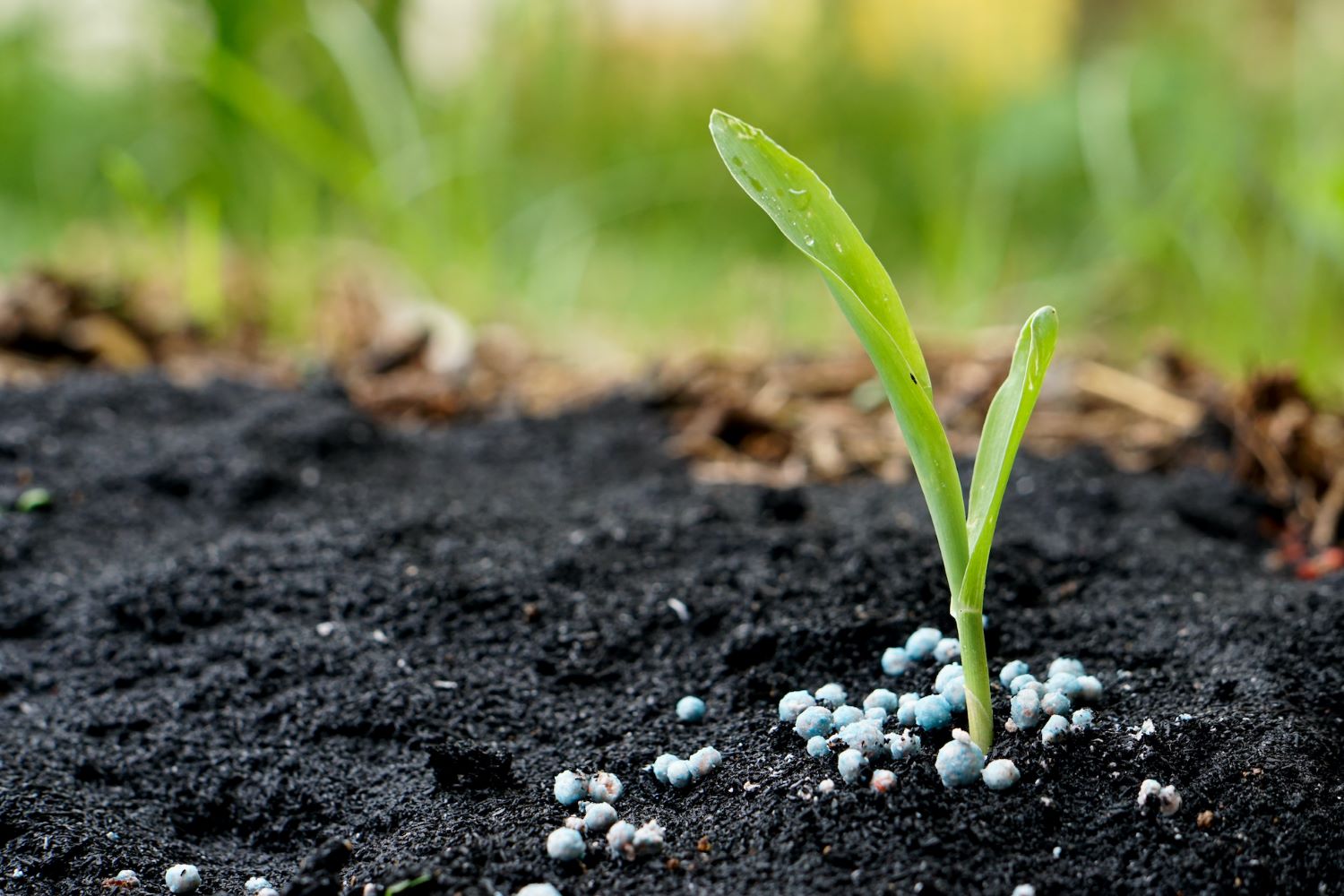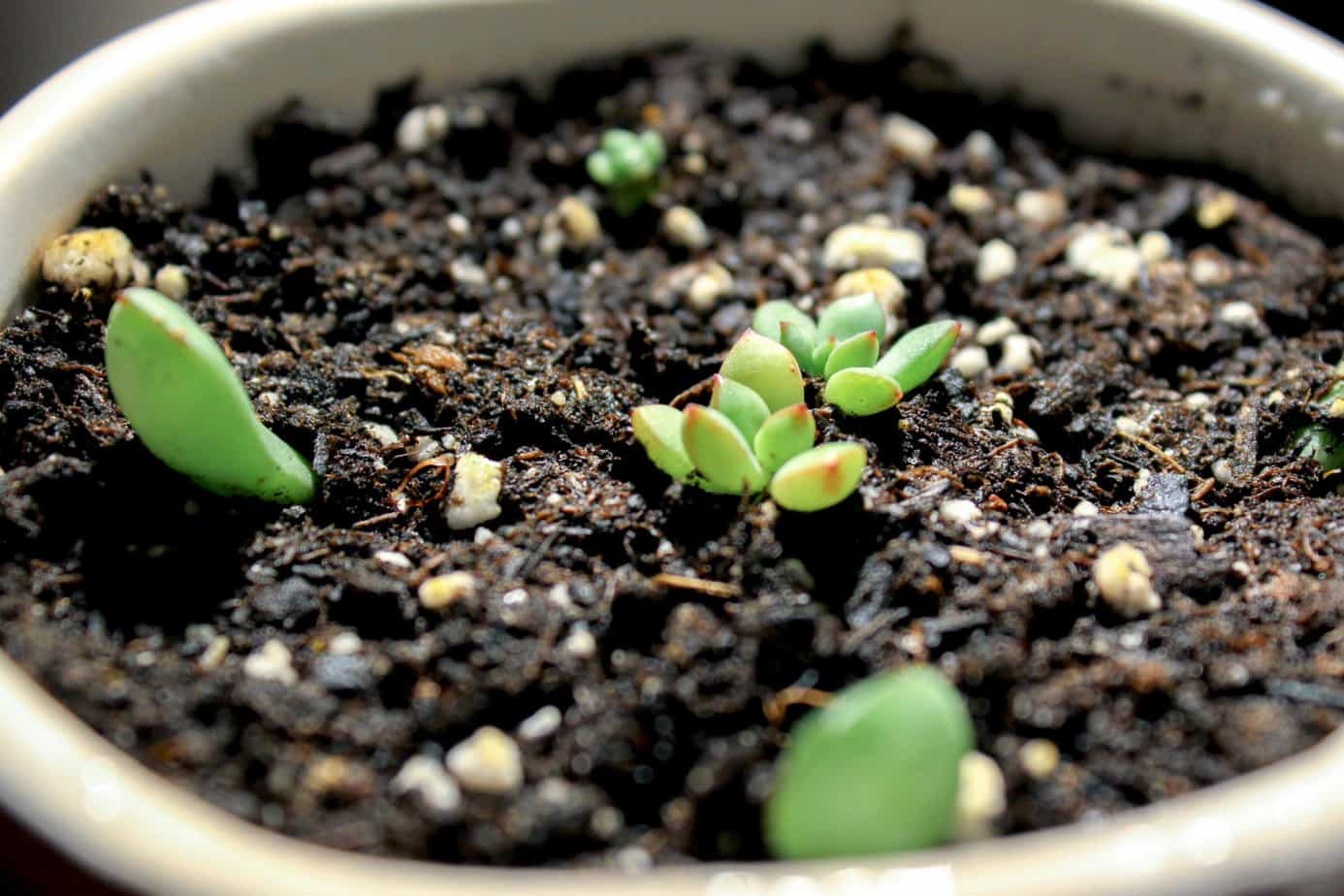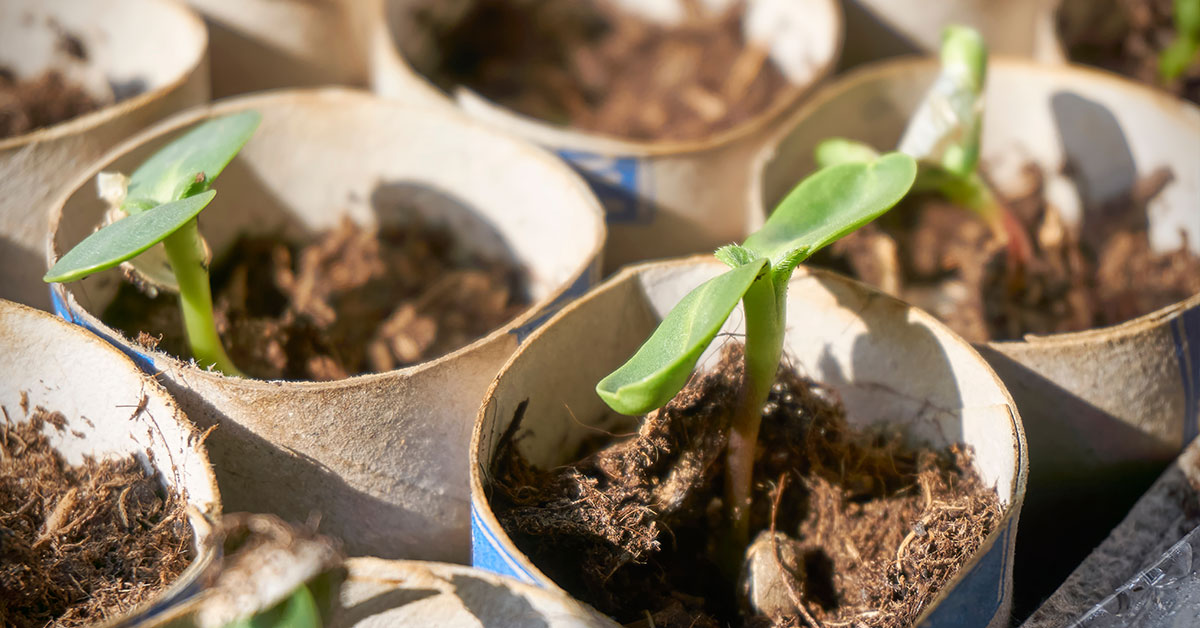Home>Gardening Tips and Tricks>Eco-Friendly Gardening>How Long Does It Take To Compost Human Waste


Eco-Friendly Gardening
How Long Does It Take To Compost Human Waste
Modified: January 22, 2024
Discover how long it takes to compost human waste in an eco-friendly gardening approach. Learn the benefits of efficient waste management for a sustainable garden.
(Many of the links in this article redirect to a specific reviewed product. Your purchase of these products through affiliate links helps to generate commission for Chicagolandgardening.com, at no extra cost. Learn more)
Table of Contents
Introduction
Welcome to the world of eco-friendly gardening! As our understanding of environmental sustainability grows, more and more people are turning to eco-friendly gardening practices. One such practice that has gained significant popularity is composting – the process of turning organic materials into nutrient-rich soil.
Composting not only reduces the amount of waste that ends up in landfills, but it also provides a natural and cost-effective way to nourish your garden. In this article, we will specifically explore the process of composting human waste, its benefits, and how long it takes to complete.
Human waste composting, often referred to as “humanure” composting, involves using human feces and urine as raw materials to create compost. While it may initially sound unappealing, when done correctly, human waste composting can be a safe and effective method of recycling nutrients and returning them to the soil.
Before diving into the specifics, it’s important to note that composting human waste requires careful consideration and adherence to certain guidelines to ensure safety and hygiene. It is not a practice suitable for everyone and may be subject to local regulations or restrictions.
Composting human waste can be an essential component of sustainable living, promoting a circular economy where waste is seen as a valuable resource. By diverting human waste from traditional sewage systems, we can reduce the strain on water treatment plants, conserve water resources, and minimize environmental pollution.
In the following sections, we will explore the factors that influence the composting time of human waste, the composting process itself, best practices for composting human waste, the benefits it offers, and safety considerations to keep in mind.
Understanding Composting
Before delving into the specifics of composting human waste, it’s crucial to have a clear understanding of the composting process in general. Composting is a natural decomposition process that converts organic materials into a nutrient-rich substance known as compost. This compost can be used to improve soil fertility, enhance plant growth, and reduce the need for synthetic fertilizers.
Composting occurs through the action of microorganisms, such as bacteria, fungi, and other decomposers. These organisms break down organic materials, such as food scraps, yard waste, and animal manure, into simpler forms. The end result is a dark, crumbly, and earthy-smelling substance that is rich in nutrients and beneficial microorganisms.
There are two main types of composting: aerobic and anaerobic. Aerobic composting involves providing oxygen to the microorganisms, promoting the growth of aerobic bacteria that require oxygen to thrive. It is the most common method used for composting and typically yields high-quality compost. Anaerobic composting, on the other hand, occurs in the absence of oxygen and is often slower and less efficient.
The key elements required for successful composting are carbon-rich materials (often referred to as browns) and nitrogen-rich materials (often referred to as greens). Browns include items like dried leaves, wood chips, and straw, while greens include materials like kitchen scraps, fresh grass clippings, and plant trimmings. The ideal ratio of browns to greens is roughly 3:1, ensuring a proper balance of carbon and nitrogen for the microorganisms.
In addition to the carbon and nitrogen ratio, composting also requires adequate moisture and temperature. The microorganisms responsible for the decomposition process thrive in a moist environment, but overly wet conditions can lead to rotting and unpleasant odors. The ideal moisture level is typically around 40-60%. Temperature, on the other hand, affects the speed of decomposition. Optimal temperatures for composting range from 130°F to 160°F (54°C to 71°C), as this range promotes the rapid breakdown of organic materials.
By understanding these basics of composting, we can now explore the specific process of composting human waste and the factors that come into play.
Human Waste Composting
Human waste composting, or humanure composting, is the process of composting human feces and urine to create nutrient-rich compost. While it may sound unconventional, when done correctly, human waste can be effectively recycled and converted into a valuable resource for gardening and agriculture.
Composting human waste is not a new concept. In fact, it has been practiced for centuries in various cultures around the world. However, it is important to note that composting human waste requires careful handling and adherence to specific guidelines to ensure safety and prevent the spread of diseases.
When composting human waste, it is essential to separate urine from solid waste. Urine is rich in nitrogen and can be used as a liquid fertilizer, while solid waste serves as a carbon-rich material. The separation of urine helps maintain the appropriate carbon-to-nitrogen ratio in the compost pile, promoting efficient decomposition and minimizing odors.
Proper management of the compost pile is crucial to ensure the elimination of pathogens and potential contaminants. The compost pile should be regularly turned or mixed to provide oxygen to the microorganisms and ensure uniform decomposition. Additionally, maintaining the proper moisture level, temperature, and aeration are key factors in the success of human waste composting.
It is important to note that not all human waste is suitable for composting. Waste from individuals who have certain infections or diseases may contain harmful pathogens that can persist in compost even at high temperatures. Therefore, it is essential to ensure that only waste from healthy individuals is used for composting purposes.
In some regions, using human waste compost in vegetable gardens is restricted due to potential risks of contamination. Therefore, it is crucial to consult local regulations and guidelines before embarking on human waste composting projects.
Human waste composting can be an effective way to close the loop in the nutrient cycle, reducing the reliance on chemical fertilizers and minimizing the environmental impact of waste disposal. It provides a sustainable and eco-friendly solution for managing human waste while transforming it into a valuable resource for organic gardening.
Now that we have explored the concept of human waste composting, let’s delve into the factors that influence the composting time of human waste.
Factors Affecting Composting Time
Composting time can vary depending on several factors, and the composting of human waste is no exception. Understanding these factors is crucial for effectively managing the composting process and estimating the time required to achieve a finished compost product. Here are some key factors that influence the composting time of human waste:
- Temperature: Temperature plays a vital role in the speed of compost decomposition. The microorganisms responsible for breaking down organic matter are most active within a specific temperature range. In general, higher temperatures between 130°F to 160°F (54°C to 71°C) accelerate the composting process, resulting in faster decomposition.
- Carbon-to-Nitrogen Ratio: Achieving the correct balance of carbon and nitrogen is crucial for efficient composting. The carbon-to-nitrogen ratio, often referred to as the C/N ratio, affects the availability of nutrients to the microorganisms. A balanced C/N ratio of approximately 30:1 is ideal for rapid decomposition. Too much carbon-rich material can slow down the process, while an excess of nitrogen-rich material can lead to odors and nitrogen loss.
- Moisture: Adequate moisture levels are essential for composting human waste. The microorganisms responsible for decomposition require a moist environment to thrive and break down organic matter. Ideally, the compost pile should have a moisture content of around 40-60%. Dry composting materials can slow down the decomposition process, while overly wet conditions can lead to anaerobic decomposition and unpleasant odors.
- Aeration: Providing sufficient oxygen to the compost pile is crucial for aerobic decomposition. Oxygen supports the growth of beneficial bacteria and prevents the accumulation of anaerobic microorganisms that can cause odors. Regularly turning or mixing the compost pile helps promote aeration and ensures that all materials are exposed to oxygen, speeding up the composting process.
- Particle Size: The particle size of composting materials can influence the composting time. Smaller particle sizes provide a larger surface area for microorganisms to act upon, accelerating decomposition. Shredding or chopping materials into smaller pieces can help expedite the composting process.
These factors interact with each other, and their optimal balance is key to efficient composting. It is important to regularly monitor and adjust these factors as needed during the composting process to ensure optimal conditions for decomposition.
Now that we have explored the factors that affect composting time, let’s dive into the composting process itself and understand how human waste is transformed into nutrient-rich compost.
The Composting Process
The composting process involves a series of natural biological and chemical reactions that transform organic materials into nutrient-rich compost. Understanding the steps involved in the composting process can help ensure successful composting of human waste. Here is an overview of the composting process:
- Collection: Human waste is collected separately from other waste materials to maintain hygiene and facilitate proper composting. Urine is typically collected separately from solid waste to help regulate the carbon-to-nitrogen ratio in the compost pile.
- Preparation: The collected human waste is then mixed with carbon-rich materials, also known as browns, to achieve the desired C/N ratio. Browns can include items like dried leaves, sawdust, or wood chips. The mixture is thoroughly blended to ensure uniform distribution of waste and browns.
- Compost Pile Construction: The prepared mixture is transferred to a compost bin or pile. It is essential to construct the pile in layers, alternating between a layer of waste and a layer of browns. Additional layers can be added to increase the size of the pile, promoting optimal conditions for decomposition.
- Moisture Control: Keeping the compost pile adequately moist is crucial for the composting process. The pile should be moistened as needed to ensure a consistent moisture content of around 40-60%. Too much moisture can lead to anaerobic conditions and unpleasant odors, while too little moisture can slow down decomposition.
- Aeration: Oxygen is essential for aerobic decomposition. Regularly turning or mixing the compost pile helps provide the necessary oxygen to the microorganisms. This process promotes the growth of beneficial aerobic bacteria and prevents the accumulation of anaerobic microorganisms that can cause odors.
- Monitoring: Throughout the composting process, it is important to monitor and maintain the compost pile’s temperature, ensuring it stays within the optimal range of 130°F to 160°F (54°C to 71°C). Monitoring the moisture content, odor, and decomposition progress can help determine if any adjustments are needed.
- Maturation: The composting process typically takes several months to a year to complete, depending on various factors. During this time, the compost undergoes a maturation process where it stabilizes and becomes fully decomposed. Regular turning or mixing of the pile can help speed up the maturation process.
- Testing and Use: Once the compost has reached a dark, crumbly texture and a pleasant earthy smell, it is considered mature and ready for use. Before using the compost in the garden, it is recommended to perform a maturity test to ensure that no pathogens or contaminants are present. The mature compost can then be used to enrich the soil and nourish plants.
By understanding the composting process and following these steps for human waste composting, you can effectively convert waste into a valuable resource for your eco-friendly gardening endeavors.
Now that we have explored the composting process, let’s move on to understanding the time required to compost human waste.
Time Required to Compost Human Waste
The time required to compost human waste can vary depending on several factors, including the composting method used, environmental conditions, and the management of the compost pile. While it is difficult to provide an exact timeframe, it typically takes several months to a year for human waste to fully decompose and transform into nutrient-rich compost.
The composting process goes through different stages, each with its own timeframe. Initially, the compost pile will go through a thermophilic phase, where the temperature rises significantly due to the activity of thermophilic bacteria. This phase typically lasts a few weeks to a couple of months, depending on the efficiency of the composting system and the management practices.
During the thermophilic phase, the high temperatures help kill pathogens and break down organic matter rapidly. However, it is important to note that human waste may contain certain persistent pathogens that require more extended periods of high temperatures to ensure complete eradication.
After the thermophilic phase, the compost pile enters a mesophilic phase, where the temperature gradually decreases. In this phase, mesophilic bacteria continue the decomposition process at a slower pace. The mesophilic phase can last several months, during which the compost undergoes the maturation process, reaching a stable and fully decomposed state.
Factors such as carbon-to-nitrogen ratio, moisture content, aeration, and temperature control can influence the duration of the composting process. Adequate moisture levels and regular turning or mixing of the pile can help accelerate decomposition and shorten the overall composting time.
In general, it is recommended to allow the composting process to proceed for a minimum of six months to ensure the complete breakdown of organic matter and the reduction of any potential pathogens. However, it is best to monitor the compost pile closely, perform maturity tests, and follow local regulations or guidelines to determine when the compost is safe and ready for use.
It is important to remember that composting human waste requires significant attention to detail and adherence to safety precautions. Consulting expert resources, local regulations, or engaging with professionals in the field can provide invaluable guidance and support throughout the composting process.
Now that we have discussed the time required for composting human waste, let’s explore the best practices for composting human waste to ensure successful and safe results.
Best Practices for Composting Human Waste
Composting human waste requires careful consideration and adherence to specific guidelines to ensure safety, hygiene, and effective decomposition. Here are some best practices to follow when composting human waste:
- Separate Urine and Solid Waste: It is crucial to collect and store urine separately from solid waste. This separation helps regulate the carbon-to-nitrogen ratio in the compost pile, prevents odor issues, and allows for the optimal use of these materials.
- Use Containers Designed for Composting: Choose appropriate composting containers or systems designed specifically for composting human waste. These containers should provide proper ventilation, drainage, and a secure cover to prevent access by animals and pests.
- Ensure Proper Carbon-to-Nitrogen Ratio: Maintain a balanced ratio of carbon-rich materials (browns) to nitrogen-rich materials (greens) in the compost pile. Aim for a C/N ratio of around 30:1 to facilitate efficient decomposition. Monitor the pile and adjust the ratio as needed to promote optimal conditions.
- Maintain Moisture Levels: The compost pile should have adequate moisture levels, typically around 40-60%. Regularly monitor and adjust the moisture content as needed to avoid overly wet or dry conditions. This range provides an environment suitable for microbial activity and decomposition.
- Turn or Mix the Compost Pile: Regularly turn or mix the compost pile to provide oxygen to the microorganisms and promote uniform decomposition. This process helps break down the waste more efficiently and prevents the development of anaerobic conditions.
- Monitor Temperature: Regularly monitor the temperature of the compost pile using a compost thermometer. Ensure that the internal temperature reaches and maintains at least 130°F to 160°F (54°C to 71°C) for an extended period to effectively kill pathogens and achieve proper decomposition.
- Allow Sufficient Time for Decomposition: It is recommended to allow the composting process to proceed for a minimum of six months to ensure complete decomposition and pathogen elimination. Follow local regulations and guidelines and perform maturity tests before using the compost in the garden.
- Practice Good Hygiene: When handling human waste, practice good hygiene by wearing appropriate protective gear, such as gloves and masks. Wash hands thoroughly before and after composting activities to minimize the risk of contamination.
- Follow Local Regulations: Research and adhere to local regulations or guidelines related to composting human waste. Some regions have specific requirements or restrictions on the use of human waste compost, so it is crucial to stay informed and comply with these regulations.
Following these best practices will help ensure that the composting process is safe, effective, and environmentally friendly. It is essential to continuously educate yourself and stay up to date with current guidelines and advancements in the field of human waste composting.
Now that we have covered the best practices for composting human waste, let’s explore the benefits it offers for your garden and the environment.
Benefits of Composting Human Waste
Composting human waste offers numerous benefits for both our gardens and the environment. Let’s explore some of the key advantages of composting human waste:
- Nutrient-Rich Soil Amendment: Composting human waste transforms it into nutrient-rich compost. This compost is a valuable soil amendment that adds essential nutrients, such as nitrogen, phosphorus, and potassium, promoting healthier plant growth and improving overall soil fertility.
- Reduced Reliance on Chemical Fertilizers: By using compost made from human waste, you can reduce the need for synthetic fertilizers. This reduces the environmental impact and minimizes potential water pollution associated with the use of chemical fertilizers.
- Improved Soil Structure and Water Retention: Compost improves soil structure by enhancing its ability to retain water, reducing erosion, and promoting better aeration. It helps sandy soils retain moisture and clay soils drain more effectively, creating a well-balanced and healthy soil environment for plants.
- Reduction of Organic Waste in Landfills: Composting human waste diverts organic waste from ending up in landfills, where it contributes to greenhouse gas emissions. By composting, we can reduce the waste footprint and promote a more sustainable waste management system.
- Conservation of Water Resources: Composting human waste can significantly reduce the demand for water-intensive sewage treatment processes. By diverting waste from traditional sewage systems, we conserve water resources and alleviate the strain on water treatment plants.
- Promotion of Circular Economy: Composting human waste aligns with the principles of a circular economy, where waste is viewed as a valuable resource. By recycling nutrients through composting, we close the nutrient loop, minimizing the need for external inputs and creating a more sustainable and self-sufficient gardening system.
- Environmental and Public Health Benefits: Properly composted human waste eliminates pathogens and potential contaminants, reducing the risk of water pollution and the spread of diseases. Composting provides a safe and controlled environment for the decomposition process, ensuring that the resulting compost is safe for use in gardens.
- Engagement in Sustainable Practices: Composting human waste allows individuals to actively participate in sustainable practices and take responsibility for their waste management. It provides an opportunity to contribute to the circular economy, reduce environmental impact, and promote a greener lifestyle.
By composting human waste, we not only minimize waste and create a valuable resource, but we also contribute to more sustainable and eco-friendly gardening practices. It is important to ensure proper handling, adherence to guidelines, and compliance with local regulations to maximize the benefits and mitigate any potential risks associated with composting human waste.
Now that we have explored the benefits of composting human waste, let’s discuss some important safety considerations to keep in mind when engaging in this practice.
Safety Considerations
While composting human waste can be a sustainable and beneficial practice, it is essential to prioritize safety and hygiene to prevent any potential risks or health hazards. Here are some important safety considerations to keep in mind when composting human waste:
- Comply with Local Regulations: Familiarize yourself with local regulations and guidelines regarding composting human waste. Different regions may have specific requirements or restrictions, so it is important to follow these regulations to ensure safe practices.
- Separate Waste from Diseased Individuals: To minimize the risk of contamination, ensure that only waste from healthy individuals is used for composting purposes. Waste from individuals with infections or diseases may contain harmful pathogens that can persist in compost, even at high temperatures.
- Proper Handling and Hygiene: When handling human waste, it is essential to practice good hygiene. Wear appropriate protective gear, such as gloves and masks, and wash hands thoroughly before and after composting activities to reduce the risk of contamination and exposure to pathogens.
- Monitoring and Testing: Regularly monitor the compost pile’s temperature, moisture content, and odor. Perform maturity tests to ensure that the compost has fully decomposed, is free from pathogens, and is safe for use in the garden. Consult expert resources or professionals for guidance on proper testing techniques.
- Prevent Access by Animals and Pests: Securely cover the compost pile or use composting containers that prevent animals and pests from accessing the waste. This can help avoid potential contamination and the spread of diseases.
- Avoid Cross Contamination: Separate areas for human waste composting and other composting activities to prevent cross contamination. Ensure that all equipment, tools, and containers used for composting human waste are dedicated solely to that purpose and not used for other gardening activities.
- Proper Maturation: Allow sufficient time for the compost to mature and stabilize before using it in the garden. This ensures that any potential pathogens or harmful microorganisms have been fully eradicated through the composting process.
- Stay Informed: Continue to educate yourself about best practices, safety guidelines, and advancements in the field of human waste composting. Stay updated with reliable resources, local regulations, and expert advice to ensure ongoing safe and responsible composting practices.
By following these safety considerations, you can minimize potential risks associated with composting human waste and ensure a safe and healthy composting environment. It is always important to prioritize safety, consult local regulations, and seek expert guidance when necessary.
Now that we have addressed safety considerations, let’s conclude our comprehensive guide to composting human waste and its eco-friendly benefits for gardening and the environment.
Conclusion
Composting human waste can be a sustainable and eco-friendly practice that offers numerous benefits for our gardens and the environment. By following proper guidelines and best practices, we can effectively recycle nutrients, reduce waste, and enhance soil fertility. However, it is crucial to prioritize safety, adhere to local regulations, and maintain good hygiene throughout the composting process.
Understanding the composting process, including the factors that affect composting time, provides valuable insights for successful composting. By managing temperature, carbon-to-nitrogen ratio, moisture levels, aeration, and particle size, we can optimize the decomposition process and achieve high-quality compost.
Composting human waste is not only a means of waste management but also a way to promote a circular economy and reduce reliance on chemical fertilizers. It conserves water resources, reduces organic waste in landfills, and contributes to the overall health of our soil and plants.
While composting human waste requires careful handling and adherence to safety precautions, it provides an opportunity to actively engage in sustainable practices and take responsibility for our waste. By composting responsibly, we can contribute to a greener and more sustainable future.
Remember to consult local regulations, stay informed about best practices, and seek expert advice when necessary. By following the guidelines outlined in this comprehensive guide, you can confidently embark on the journey of composting human waste and enjoy the rewards of a thriving, environmentally friendly garden.








